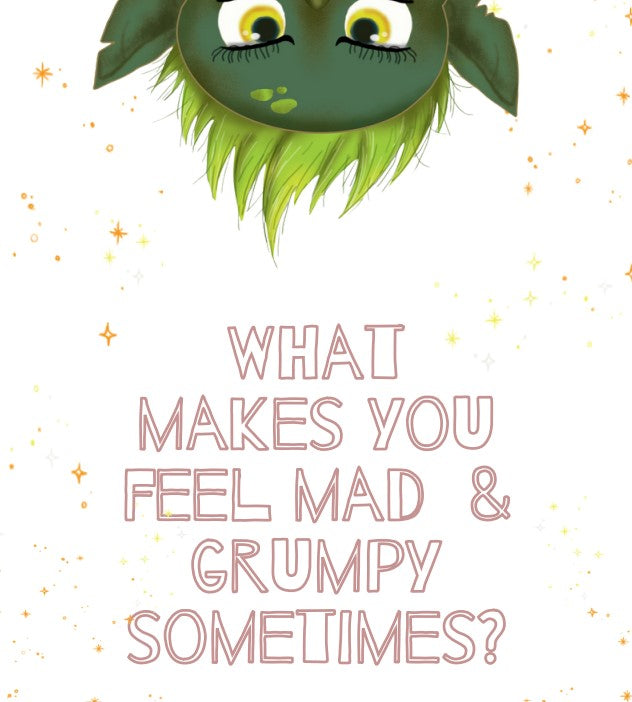
Creative Ideas for Using Dizzy Waggle Question Prompts
Cloe WillettsShare

Use the ideas below to get the most out of our simple but effective educational resource that kids will enjoy.
Dizzy Waggle Question Prompts is a fun and simple tool to enhance children's emotional intelligence and deepen the bond between adult and child. This downloadable PDF resource offers a gentle guided approach to nurturing long-term resilience and encouraging honest conversations.
With 40 unique questions designed to identify and express a range of emotions, Dizzy Waggle Question Prompts is playful, insightful, educational, and the perfect recipe for connection.
Note: There are no rules with these carefully and lovingly created question prompts. Simply find a quiet space, stay present and attentive with your child, and enjoy supporting them in their learning of emotional literacy skills!

CREATIVE IDEAS
For some children, answering questions aloud might be more difficult than it is for others. That’s OK! There are plenty of other ways kids can express their thoughts or feelings when given one of our question prompts.
PICTURE DRAWING:
Set up a calm creative space and encourage your child to draw or paint the answer to the question they receive. Ask them to create the scene, memory, or thought on paper, using colours they think might match their feelings.
Chat with them about what's unfolding in the picture as they paint or draw, asking them to label parts of their picture using words with your help.
Once they’ve finished their creation, ask if they can explain to you exactly what’s happening in their picture. If you'd like to expand the conversation around the picture, refer to our bonus guidance section with ideas for add-on questions at the start of the resource.

USE TOYS FOR STORYTELLING PLAY:
Your child might not have the desire or patience to sit down and chat or quietly draw a picture, instead coming alive with physical play! They might like to use dolls, stuffed toys, or their favourite superhero figurines to act out their answer to a question prompt as a ‘live show’ or game with you.
For example, if their question prompt asks when they last felt shy or excited, ask them to show you what happened with their toys. Ask them to give different characters funny voices or join in and bring your own character to the scene.
As you engage with them in storytelling play, think back to our bonus guidance section at the start of the resource, which is designed to help you include add-on questions into the activity and deepen the conversation.

CREATE A KEEP-SAFE SCRAPBOOK:
If you decide to write down your child’s responses to the question prompts, or they draw their answers as a picture, stick it into a special journal that you can reflect on together later.
Not only will it allow you to watch your child’s progress as they grow their emotional literacy skills, but it will show them that their feelings and experiences are important enough to be kept and treasured.
Plus, their answers/pictures will start to form an image of who they are, what they value, and how they feel they fit into the world. This creates better understanding between parent and child. After all, one of the most rewarding things as a human is to feel seen and understood by those we love.
SHARE, SHARE, SHARE
Shared vulnerability between people deepens interpersonal bonds and attachment and it’s no different for children.
Part of the Dizzy Waggle question prompt concept is having both adult and child do the activity. Start by sharing your own response to the question prompt out loud, which will encourage your child to have their own go, while teaching them more about you.
ACCESSING THIS RESOURCE:
This is a downloadable PDF file to save directly to your device or desktop. When you order through our website, a link is sent directly to your inbox to download, as well as a free Dizzy Waggle sticker chart.

If you haven't already, you can purchase our book The Dizzy Waggle Who Lit the Dark to enhance your child's learning. The heartwarming story teaches kids about emotions and how they feel in the body, while providing easy tools for emotional regulation. Plus, children love the rhyming plot and adorable Dizzy Waggles!

ENJOY OUR FREEBIE!
As an added bonus for purchasing Dizzy Waggle Question Prompts for $6.00, we’ve created a print-off sticker chart that’s available as a free download when you purchase this resource.
Each time a child completes a question prompt exercise, they can put a sticker on their chart.
Then, you can reward them with a fun experience when they fill 10, 20, or all 50 sticker spaces. This is great for positive reinforcement and building your child’s neural pathways (aka the wiring of the brain), which you can read about here.


